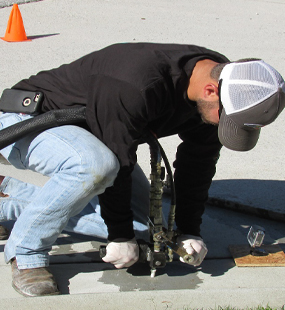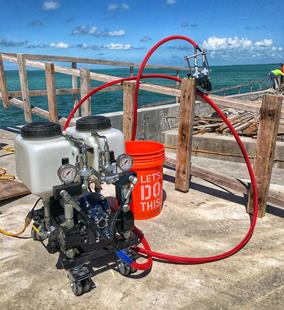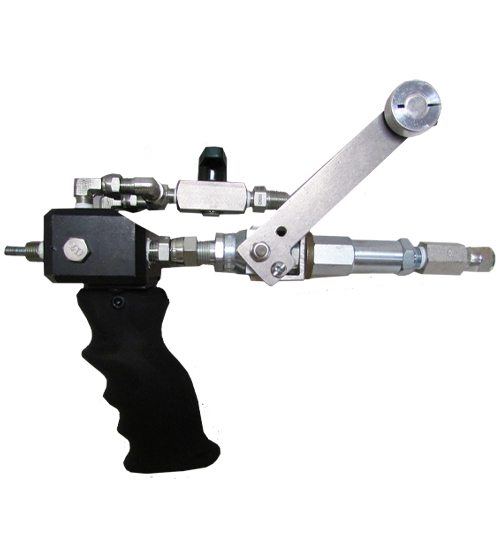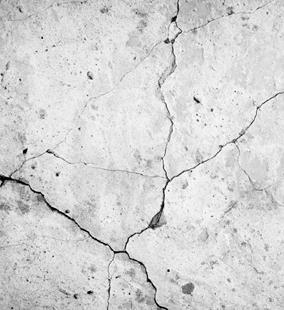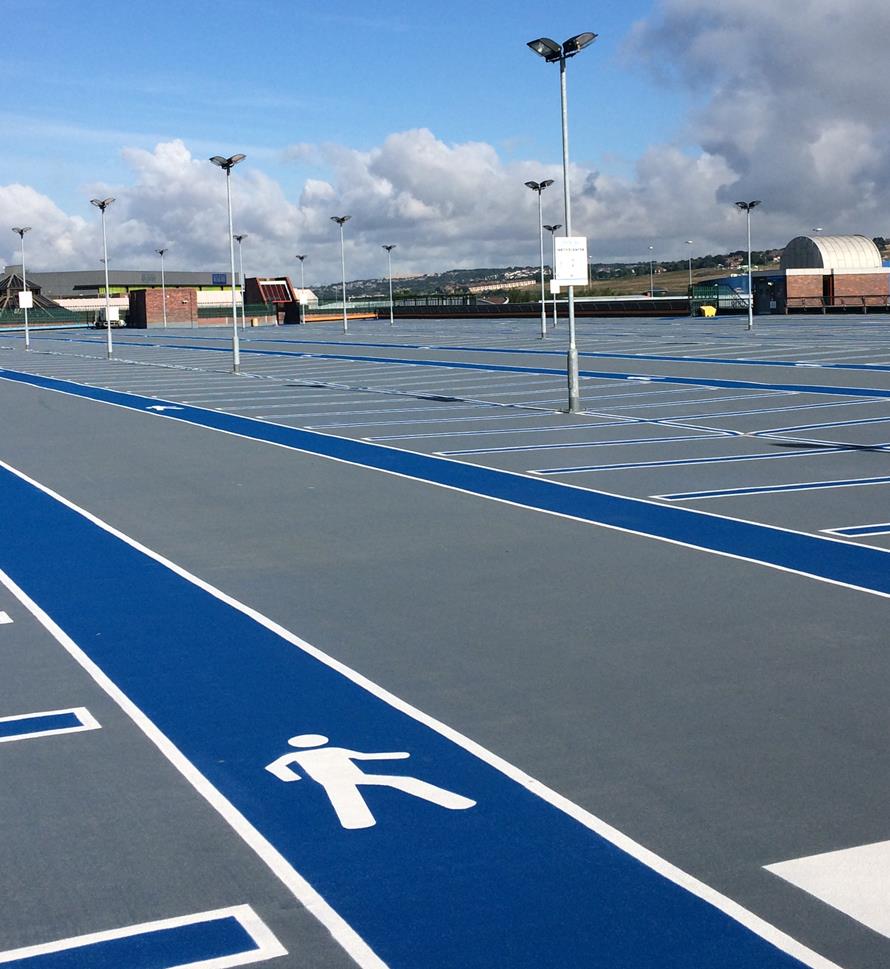
- Home
-
Solutions
-
Leak Seal
Seal leaks in concrete or masonry with crack injection and curtain grouting of our Prime Flex polyurethanes and AR acrylate resins. Prime Resins offers superior solutions for stopping leaks in every type of environment.
Read More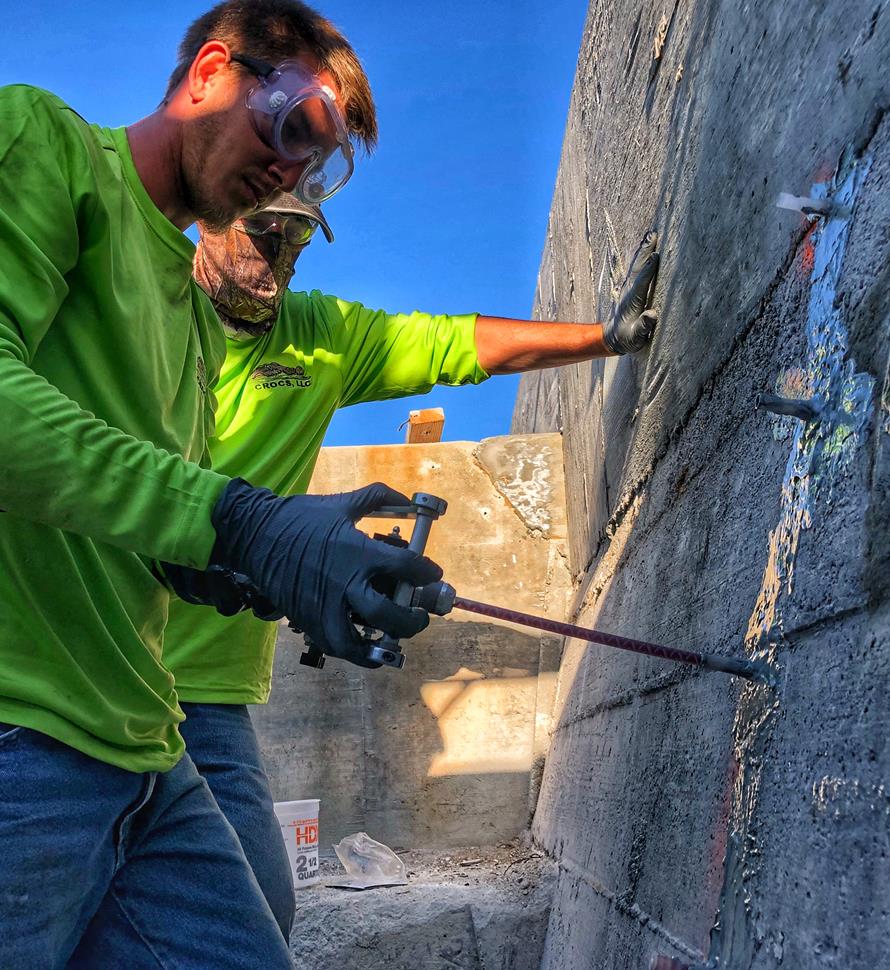
-
Soil Stabilization
Sound concrete relies on a sound substrate. Stabilize soils and fill voids with our polyurethane and acrylate foams and gels. We make chemical grouts for permeation and compaction grouting in wet and dry conditions.
Read More
-
Slab Lifting & Stabilization
Slab lifting and slab stabilization with polyurethane foams offers many advantages over traditional mudjacking. Only Precision Lift is engineered to tackle underlying issues and slab lifting with precise, dependable results.
Read More
-
Floor Repair & Joint Protection
Spalled concrete is concrete that is chipped, cracked and deteriorating. This often happens at a joint.
Read More
-
Seawall Repair
You can repair a seawall or bulkhead with Prime Resins chemical grouts: fill voids, stabilize loose soil and seal leaks at a fraction of the cost of wall replacement.
Read More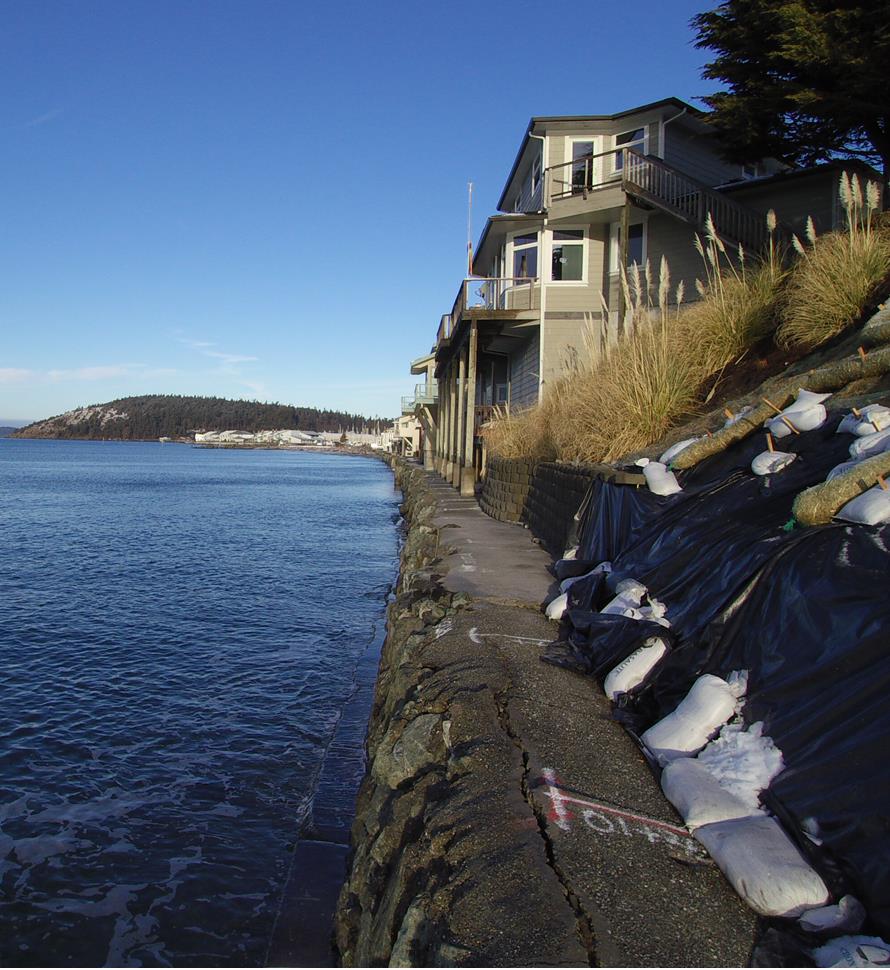
-
Structural Repair / Bonding & Anchoring
The need for crack repair in concrete structures can be caused by many different factors. Damage can occur to the concrete in situations where direct impact puts stress on one area of the structure.
Read More
-
Highway & Bridge
The geotechnical needs of DOTs and other agencies responsible for roads and bridges are vast. Issues include: Culvert repair Soil stabilization Void filling Concrete slab lifting Sinkhole remediation Slope control Slough control in tunneling
Read More
-
Waterproofing & Secondary Containment
Protecting concrete usually means shielding it from the elements of nature or from harsh manmade chemicals. But it’s not just concrete that needs such protection. Corrugated metal pipe, steel surfaces, material hoppers, rail cars and masonry all can come in contact with corrosive or abrasive materials or harsh conditions.
Read More
-
Leak Seal
-
Products
-
Leak Repair
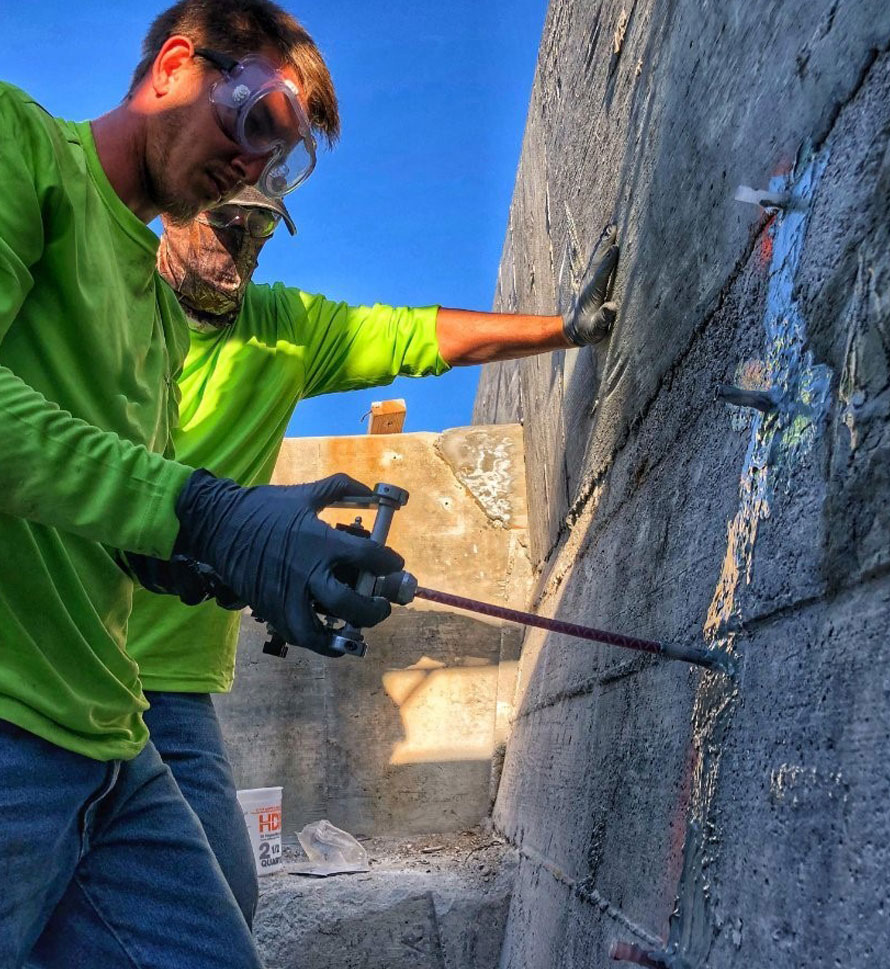
-
Soil Improvement
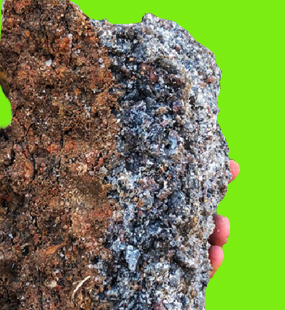
- Soil Stabilization
- Slab Lifting
- Structural Repair / Bonding & Anchoring
- Pumps
- Dispense Guns & Applicators
-
Turnkey Trailer Rig
Are you ready to hit the ground running doing concrete leveling with polyurethane foam? Prime Resins offers the industry’s best suite of products for lifting concrete as a turnkey, fully equipped trailer rig.
Read More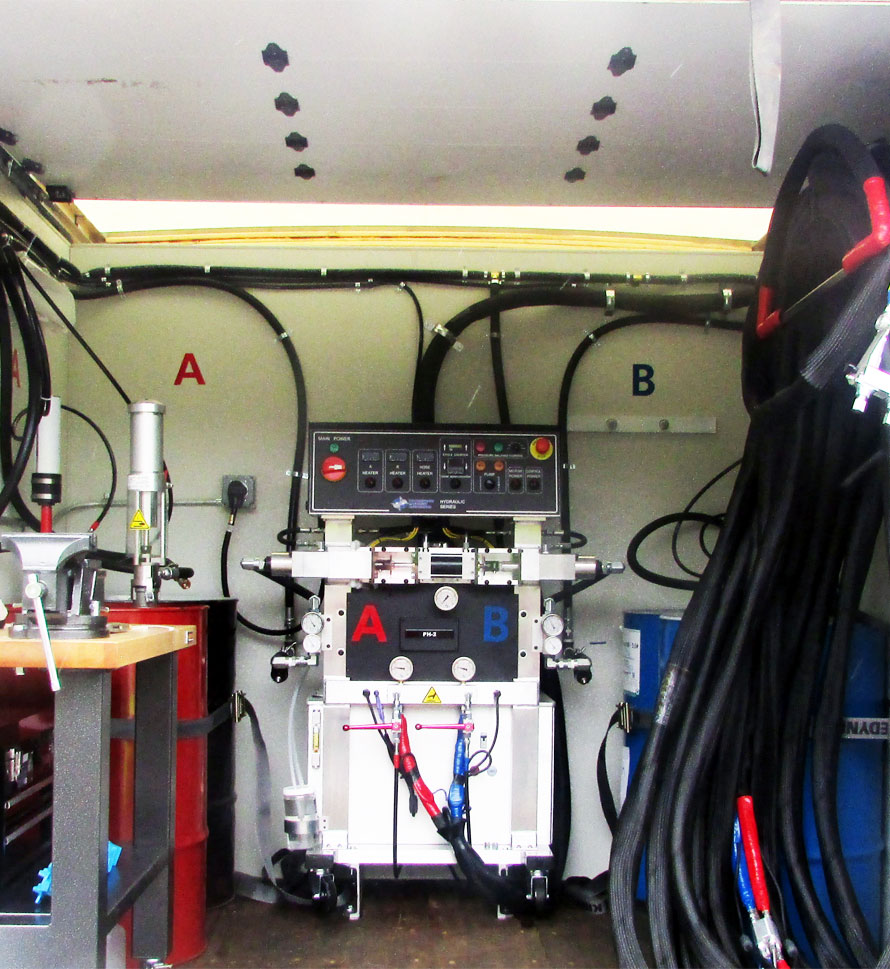
-
Accessories (General)
- 3/4" expendable drive point
- 3/8" and 3/4" soil probes
- Cartridge / Port Connectors and Mixers
- Conduit Seal Kit
- DM500 Divorced Mix Manifold
- Eco Flush
- F Valve
- Flush Wand
- Grout Needle Kit
- High Pressure Control Valve
- High Pressure Mechanical Ports
- Kick Fast
- Low Pressure Plastic Ports
- PR11 TEA (used w/ PR10 ACLM)
- PR12 APSF catalyst (used w/ PR10 ACLM)
- PR17 LYTX
- Prime Kat
- Prime Plug
- Prime Solvent CGC
- Oakum
- Soil pipe jack
- Stainless Steel Grout Needle & Kit
- StainShield
- Wall Stinger Nozzle
-
Soil Grouting Accessories
- Pipe Coupler
- Pipe Coupler Ferrule
- Buttonhead Coupler - Straight
- Buttonhead Fittings
- SG 3/4" Expendable Drive Tip
- SG 3/4 Rod - 39" Base
- SG 3/4 Rod - 39" Connector
- SG 3/4 Rod - 19.5" Base
- SG 3/4 Rod - 19.5" Connector
- SG 3/4 Fitting - Pipe to Buttonhead
- SG 3/4 Fitting - Buttonhead Fitting
- IL 1/2" Drive Point
- IL 1/2" rod - 39" base
- IL 1/2" rod - 39" connector
- IL 1/2" Fitting Buttonhead
- SG 3/4" Fitting - Buttonhead Coupler
- SG 3/4" Slotted Drive Tip
- SG 3/4 Drive Head
- Modified Pipe Jack Soil Grouting
- SG 3/4 Fitting - Buttonhead Coupler
- Pagani DPM30 Penetrometer
- IL 1/2" Fitting - Buttonhead to Connector Rod
- IL 1/2" Rod to Rod Coupler Fitting
- High Pressure Flow Control Valve
- Buttonhead Coupler - 90°
- Buttonhead Clamp Kit
- Floor & Joint Repair
- Waterproofing & Secondary Containment
-
Leak Repair
- News
- Downloads
-
Tools
-
Case Studies
Prime Resins takes pride in its ability to find the right solutions to the problems facing our customers. Here are some examples of customers’ successful jobs:
Read More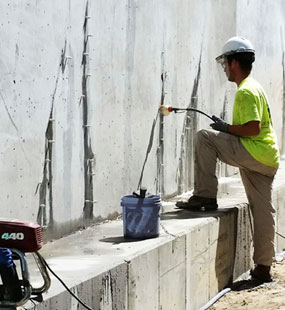
-
Prime Practices
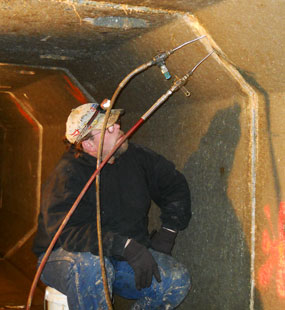
-
Videos

-
Estimating Tools & Info.

-
Why us?
The superior quality of products at a fair price, our consultative approach, and our unparalleled technical support set Prime Resins apart. Learn more about the Prime difference.
Read More
-
Product Types & Typical Uses
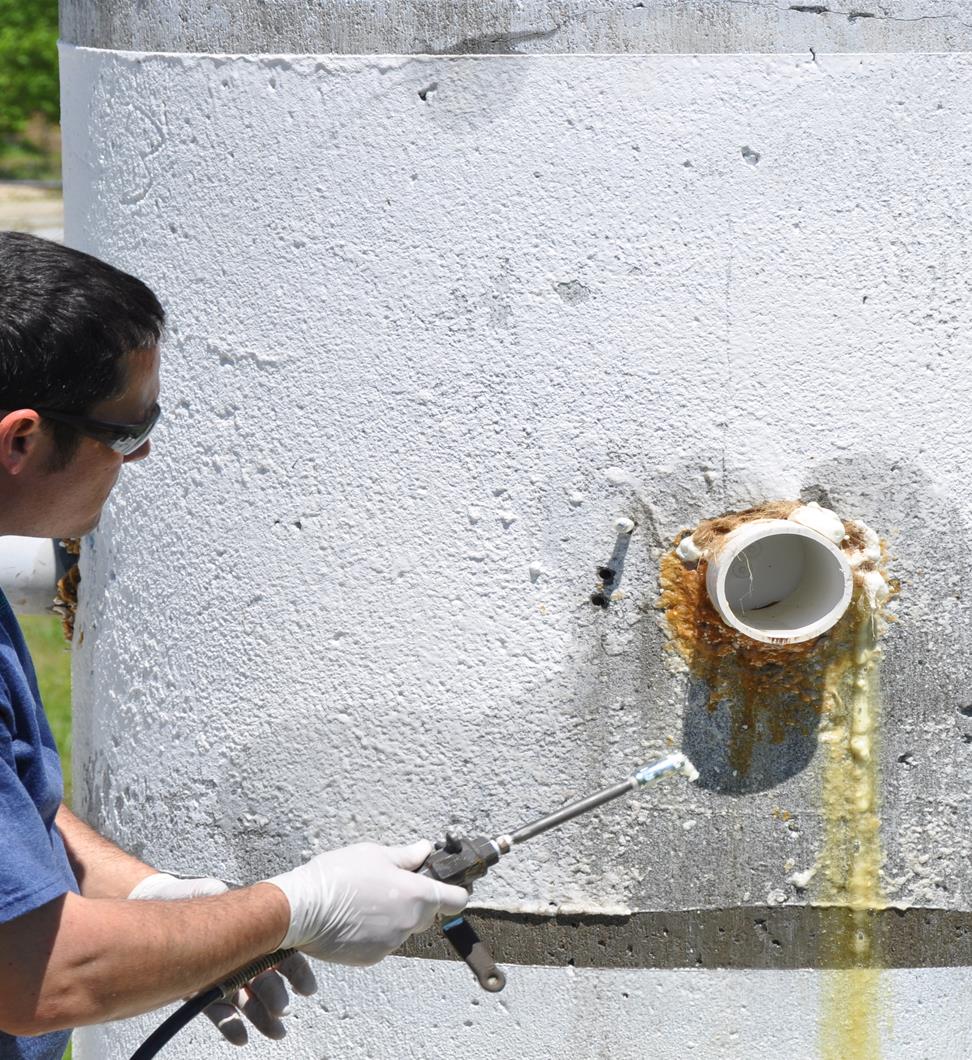
-
Looking for a contractor?
-
Certifications
-
Case Studies
- Contact
Case Studies- Leak Seal Pages
Undersealing a liquid natural gas facility
Client: Sabine Pass, Texas, Liquid Natural Gas Facility
Problem: The project was at the new construction of a liquid natural gas (LNG) terminal in Sabine Pass. The concrete contractor needed to stop leaks in the pit so a special overlay material could be installed on the floor. The function of the pit is in case of an emergency or maintenance they can empty some of the piping carrying the natural gas into this pit. Being heavier than air, the gas would settle into the pit and would trigger fans and foam tanks to place a layer of foam over the natural gas, containing it within the pit. Since compressed natural gas is extremely cold, the pit would receive a special concrete layer to prevent damage to the structural concrete.
The floor slab is 4+ feet thick and sits on a six foot thick mud mat. The facility is on the shipping channel, so the ground water table is quite high. Water was getting between the mud mat and structural slab, creating uplift and cracking off the slab. The hydrostatic pressure was so great, that when holes were drilled for grout injection, water shot up six inches.
In addition, water was leaking in around the perimeter horizontal joint where the walls met the floor slab.
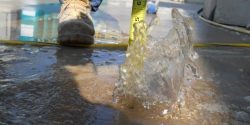
Hydrostatic pressure was such that water shot up 6″ when holes were drilled through the concrete to underseal the pit. (Photo copyright of Prime Resins, Inc. Not for reuse.)
Solution: The wall to floor joints in several areas were injected with Prime Flex 900 XLV, a super low viscosity hydrophilic polyurethane resin. Most of the floor was undersealed with Prime Flex 920, a hydrophobic polyurethane resin that is impervious to water.
Added challenge: The ambient temperature in the pit was above 120°F. In addition to the obvious worker health safety issues, it meant that measures had to be taken to keep the material from reacting too quickly. Heat will accelerate the reaction of the polyurethanes and lower their viscosity. The amount of catalyst was reduced for the 920 to counteract the heat effect and all the products performed perfectly despite the heat.
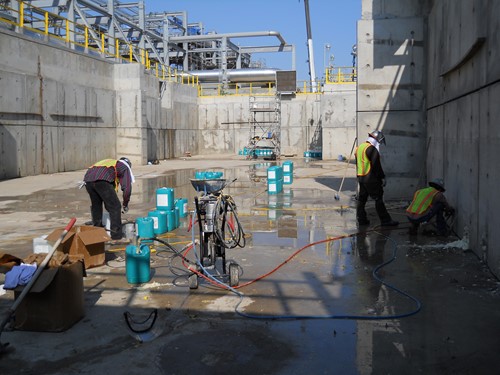
Horizontal joints of wall to floor were sealed with Prime Flex 900 XLV polyurethane resin. (Photo copyright of Prime Resins, Inc. Not for reuse.)
Outcome: The grouting was successful. Prime Resins provided 11 days of on-site technical support. Approximately 150 gallons of Prime Flex 900 XLV and 990 gallons of Prime Flex 920 were used. Injection holes were sealed with Prime Gel 2000 high mod epoxy paste after packer removal.




